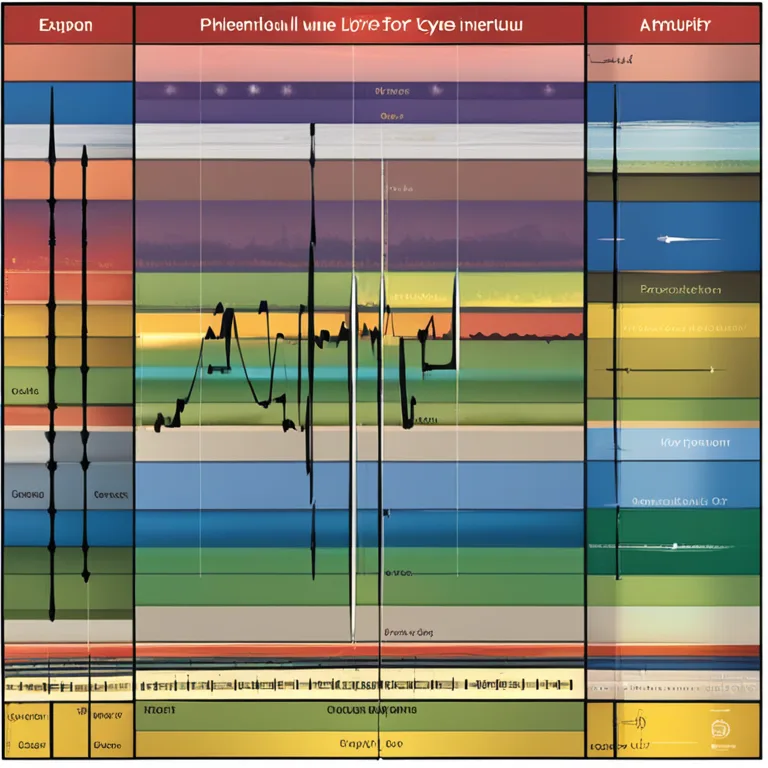
The Human Biorhythm Cycle: Patterns of Life's Ebb & Flow
Delve into the human biorhythm cycle, a compelling concept in the holistic understanding of our physiological and emotional patterns over time.
article by Adrian Wallace
Introducing Biorhythms: A Conceptual Overview
Biorhythms represent a fascinating theory postulating that our daily lives are influenced by rhythmic biological cycles. These cycles are believed to affect our physical, emotional, and intellectual faculties. The idea took root in the early 20th century and since then, it has offered a unique lens through which we analyze our ups and downs. Advocates of biorhythms suggest that by tracking these cycles, we can predict periods of high performance, emotional resilience, and mental acuity, as well as times when we should be cautious and avoid critical decisions.

The Trio of Primary Cycles
Three main cycles form the foundation of the biorhythm theory: the 23-day physical, the 28-day emotional, and the 33-day intellectual cycles. Each of these cycles begins from the moment of birth and oscillates in a sinusoidal pattern between positive and negative phases. During a positive phase, one might experience heightened abilities in the corresponding area, while the negative phase might present challenges or a reduced capacity for that aspect of life. The critical days when a cycle changes from positive to negative or vice versa, are considered times of heightened risk for errors or accidents.
Additional Biorhythm Cycles
In addition to the three primary biorhythm cycles, proponents of a more expansive view also recognize other cycles such as the 38-day intuitive cycle, the 43-day aesthetic cycle, and even longer spiritual and awareness cycles. These additional cycles are believed to affect deeper aspects of our being, influencing intuition, creativity, and our connection to the broader universe.

Biorhythms Today: Modern Applications
In the digital age, the concept of biorhythms has been integrated into various applications and software, attempting to simplify the tracking and interpretation of these cycles. Whether for personal growth, wellness tracking, or even decision-making in business and sports, biorhythm calculators provide users with insights based on their birth dates and the corresponding ebb and flow of their biological cycles.

Critical Perspectives and Scientific Scrutiny
Despite its popularity among certain circles, the biorhythm theory has faced its share of skepticism from the scientific community. Critics argue that the theory lacks empirical support and that its predictive power is no better than chance. However, believers in biorhythms maintain that there is anecdotal evidence pointing to the validity of these cycles. They claim that maintaining awareness of one’s biorhythms can lead to better self-understanding and life management.
Integrating Biorhythms into Daily Life
Those who follow their biorhythms often use the insights to guide daily decisions, from choosing the best days for major events to recognizing and respecting one’s natural limits on a given day. While not all individuals might place stock in the theory, those who do report feeling more in tune with their bodies and more mindful of their personal patterns over time.
Concluding Thoughts on Biorhythms
The human biorhythm cycle remains an intriguing concept that bridges the realms of mysticism and science. Whether one sees it as a valuable tool for self-improvement or a source of entertaining speculation, the rhythms of life continue to sway us in mysterious ways, and biorhythms give us a framework to appreciate those subtle pulses.
Published: 1/4/2024
Modified: 1/4/2024
More predictions
Come back here soon to learn more about yourself and your future


The Rhythms of Life: Understanding Biological Cycles
Delve into the fascinating world of biological rhythms and discover how they shape our lives, influence our health, and intertwine with nature's ebb and flow.


Biorhythm Love Match: Harmonizing Relationships
Discover how biorhythms can influence love compatibility and enhance relationship harmony with our insightful guide on biorhythm love matches.


The Rhythms Within: Your Guide to Biorhythm Reading
Discover how biorhythm reading can provide insight into your physical, emotional, and intellectual cycles, helping optimize your daily life.